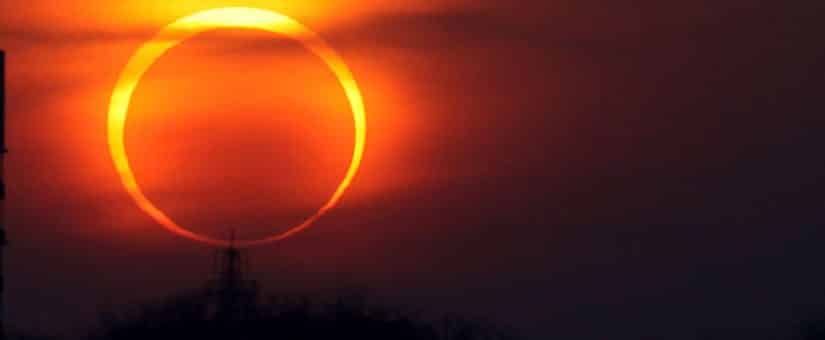
Backyard Observatory: June has some sights to see
- Posted by Barrington Hills
- On June 7, 2021
Thrillist reports:
A ‘Ring of Fire’ Eclipse Is Among the Best Stargazing Events to See This Month
June has great weather for stargazing and some sights to see.
Dustin Nelson | June 2, 2021
Welcome to peak stargazing season. Whether or not the most exciting events are taking place in the summer—and there are some good ones—it’s clear that the best time to go out stargazing are these warm summer nights.
There’s always something to see in the night sky, whether you’re looking for the visible planets, the Milky Way, Messier objects, or constellations. You kind of can’t go wrong by heading to dark skies in the summer. However, if you’re looking for a little inspiration to get you out the door, there are plenty of beautiful sights to take in this month, including a supermoon and a “ring of fire” solar eclipse.
Here are all of the celestial events you should be sure to catch in June.
June 10: “Ring of Fire” Solar Eclipse
We just saw a total lunar eclipse in late may, and now, an annular solar eclipse will be spotted in early June. This eclipse isn’t a total solar eclipse where the moon completely blacks out the sun. Instead, this one leaves a “ring of fire” around the edge of the moon’s shadow because the moon is just far enough away to not entirely block the sun’s light. If you’re in an area where it’s visible, you’ll see the eclipse take place on the morning of June 10 at 6:53 am ET, CBS reports.
The full “ring of fire” will be visible in parts of Russia, Greenland, and northern Canada. Viewers in northern Asia, Europe, and the US will be able to spot a partial eclipse, per NASA.
June 13: Mars and the Moon Come Together
There will be a conjunction between the moon and Mars on June 13. That means you’ll see the two celestial objects come close together in the evening sky. In fact, the waxing crescent moon will be just about three degrees of the red planet, per Space.com. Mars isn’t all too bright right now, so it’ll definitely be easier to spot in dark skies. You’ll find the pair in the western sky after sunset. They’ll stay up until around 11 pm, depending on your location.
June 24: The Last of 3 Straight Supermoons Arrives
June 24 is the night of the “full strawberry moon.” It’ll be the last of three straight supermoons that started in April. Though, it’s tough to follow May’s supermoon since it was a rare supermoon landing on the night of a total lunar eclipse. Still, the full moon will be a little larger and a little brighter than the average full moon this month.
June 27-28: Saturn, Jupiter & the Moon Join Forces
On back to back days, there will be conjunctions between Saturn and the moon, followed by Jupiter and the moon. So, you’ll see all three objects relatively close together on both mornings. The planets rise just before midnight and will remain above the horizon through sunrise, according to In the Sky. You’ll find them sitting in the southeast sky before dawn.All Month: Venus Is Back
Ready to go stargazing?
Here are all the best stargazing events that you can get out and see this month or you could stay in a stream the northern lights from home. If you’re just getting started, check out our guide to astronomy for beginners or easy stargazing road trips from big US cities.
https://www.thrillist.com/news/nation/astronomical-events-2021-stargazing-night-sky-map


